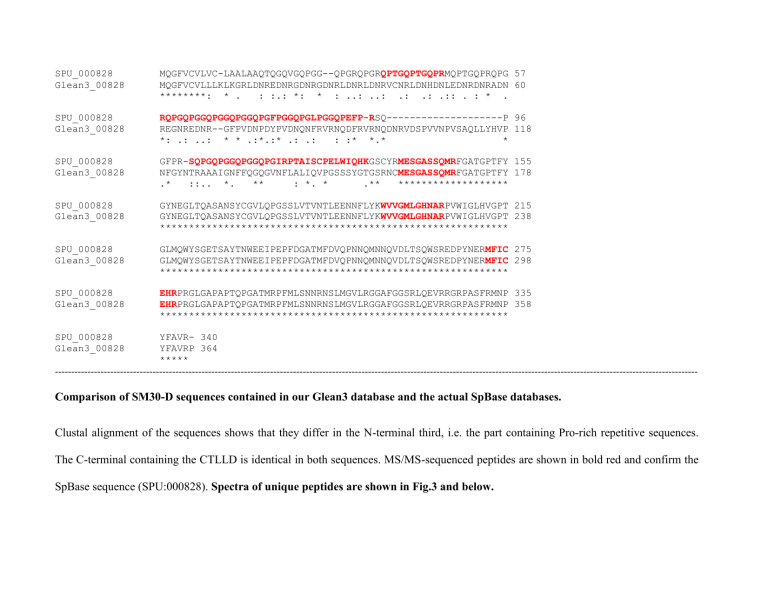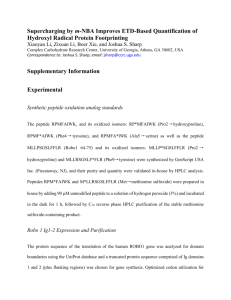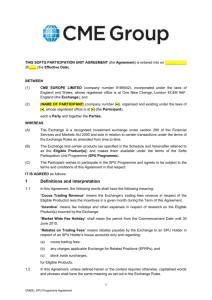SPU_000828 MQGFVCVLVC-LAALAAQTQGQVGQPGG

SPU_000828 MQGFVCVLVC-LAALAAQTQGQVGQPGG--QPGRQPGR QPTGQPTGQPR MQPTGQPRQPG 57
Glean3_00828 MQGFVCVLLLKLKGRLDNREDNRGDNRGDNRLDNRLDNRVCNRLDNHDNLEDNRDNRADN 60
********: * . : :.: *: * : ..: ..: .: .: .:: . : * .
SPU_000828 RQPGQPGGQPGGQPGGQPGFPGGQPGLPGGQPEFP-R SQ--------------------P 96
Glean3_00828 REGNREDNR--GFPVDNPDYPVDNQNFRVRNQDFRVRNQDNRVDSPVVNPVSAQLLYHVP 118
*: .: ..: * * .:*.:* .: .: : :* *.* *
SPU_000828 GFPRSQPGQPGGQPGGQPGIRPTAISCPELWIQHK GSCYR MESGASSQMR FGATGPTFY 155
Glean3_00828 NFGYNTRAAAIGNFFQGQGVNFLALIQVPGSSSYGTGSRNC MESGASSQMR FGATGPTFY 178
.* ::.. *. ** : *. * .** *******************
SPU_000828 GYNEGLTQASANSYCGVLQPGSSLVTVNTLEENNFLYK WVVGMLGHNAR PVWIGLHVGPT 215
Glean3_00828 GYNEGLTQASANSYCGVLQPGSSLVTVNTLEENNFLYK WVVGMLGHNAR PVWIGLHVGPT 238
************************************************************
SPU_000828 GLMQWYSGETSAYTNWEEIPEPFDGATMFDVQPNNQMNNQVDLTSQWSREDPYNER MFIC 275
Glean3_00828 GLMQWYSGETSAYTNWEEIPEPFDGATMFDVQPNNQMNNQVDLTSQWSREDPYNER MFIC 298
************************************************************
SPU_000828 EHR PRGLGAPAPTQPGATMRPFMLSNNRNSLMGVLRGGAFGGSRLQEVRRGRPASFRMNP 335
Glean3_00828 EHR PRGLGAPAPTQPGATMRPFMLSNNRNSLMGVLRGGAFGGSRLQEVRRGRPASFRMNP 358
************************************************************
SPU_000828 YFAVR- 340
Glean3_00828 YFAVRP 364
*****
-----------------------------------------------------------------------------------------------------------------------------------------------------------------------------------------------------
Comparison of SM30-D sequences contained in our Glean3 database and the actual SpBase databases.
Clustal alignment of the sequences shows that they differ in the N-terminal third, i.e. the part containing Pro-rich repetitive sequences.
The C-terminal containing the CTLLD is identical in both sequences. MS/MS-sequenced peptides are shown in bold red and confirm the
SpBase sequence (SPU:000828). Spectra of unique peptides are shown in Fig.3 and below.
Concordantly with fragmentation rules the most intense fragment, y6, results from a cleavage in front of proline. Almost complete y- and b-ion series allow the unequivocal identification of this peptide.
As in the previous spectrum the most intense fragment, y15 2+, is derived from a cleavage in front of a proline. A long uninterrupted series of y-ions, supported by a shorter series of y-ions and b-ions, is the basis for high PEP and Mascot scores.
This peptide is triply charged in agreement with the presence of an internal positively charged residue (His) in addition to the C-terminal
Lys. The presence of an a2/b2 pair and an extended series of y-ions supported by several b-ions yields high PEP and Mascot scores for this peptide, although there is no preferential cleavage N-terminal to proline.
* indicates loss of SOCH
4
(-64Da for singly charged fragments) from the oxidized Met in several y-ions. An a2/b2 pair is present in addition to an almost complete y-ion series. The relatively intense unassigned peak in front of the y8
2+
ion at a n m/z of 411.3604 most probably results from loss of water from y8
2+
([y8-H
2
O]
2+
, m/z=411.1822).
Fragmentation of a doubly charged parent ion of this peptide. * indicates loss of SOCH
4
(-64Da for singly charged fragments) from the oxidized Met in several y-ions starting with y7 and b10, in agreement with the position of the oxidized Met. The major non-annotated peak at m/z 596.470 most probably represents the MH
2+ peptide ion showing loss of SOCH
4
(-32Da from a doubly charged ion) with a calculated m/z of 596.3227. The major non-annotated peak at m/z 453.905 is most probably the [y9-SOCH
4
] 2+ ion (theoretical m/z
453.749). Recognition and annotation of doubly charged ions with losses of this type was not implemented in the MaxQuant version we used (1.014.6), but is implemented in more recent higher versions. A triply charged form of this peptide, caused by the presence of an internal basic residue (His), was also detected.
* indicates loss of SOCH
4
(-64Da for singly charged fragments) from the oxidized Met in several b-ions. The major non-annotated peak at m/z 472.976 is most probably the MH
2+ peptide ion showing loss of SOCH
4
(-32Da from a doubly charged ion) with a calculated m/z of 472.724. The less intense peak in front of the [MH-SOCH
4
]
2+
at m/z 464.123 may be the same with loss of H
2
O from Glu (-8.853Da as compared to a theoretical value of 9Da for a doubly charged ion).











